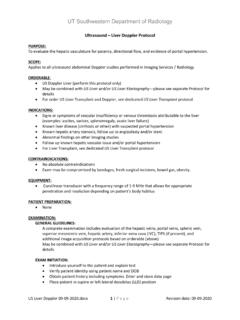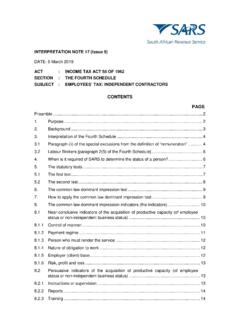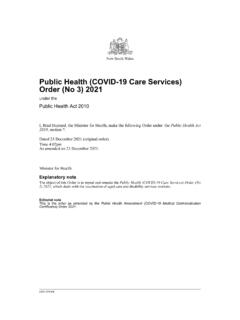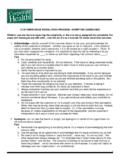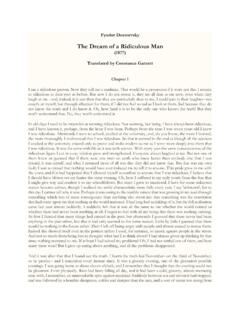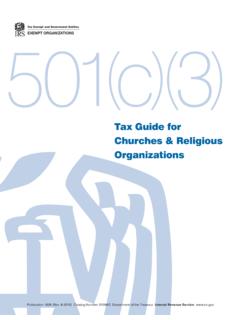Transcription of Understanding the meaning of regulated facility - GOV.UK
1 Environmental Permitting Regulati ons (England and Wales) 2010 Regulatory Guidance Series, No RGN 2 Understanding the meaning of regulated facility Appendix 1 Interpretation of Schedule 1 to the Regulations Appendix 2 Defining the scope of the installation Version April 2019 Record of changes Version Date Change March 2008 Issued for launch of Environmental Permitting Regulations Draft January 2010 Divided the guidance to separate the Annexes.
2 Corrections to text reproduced from Schedule 1 of the Regulations. Updated commentary: Note on biopharmaceuticals Note on anaerobic digestion Note defining poultry and pigs Issued for informal consultation. April 2010 No comments received, so issued with minor changes. February 2012 Updated general notes : revised guidance on deciding the most apt activity description for the burning of waste and whether a plant is a co-incineration plant. Updated commentary: new section on carbon capture and storage March 2013 Updated for the Industrial Emissions Directive (IED) changes introduced by EPR amendment SI 2013 No. 390 May 2015 Updated to incorporate: -Amendments to Schedule 1 (activities, installations and mobile plant) introduced by regulation 11 of SI 2014 in February 2014.
3 -Amendments to the interpretation of Schedule 1, sections , , , , , and April 2019 Updated Note to take account of the Medium Combustion Plant Directive (MCPD). Published by: Environment Agency Horizon House, Deanery Road Bristol BS1 5AH Tel: 03708 506506 Email: Environment Agency 2015 Al l rights reserved. This document may be reproduced with prior permission of the Environment Agency. Environment Agency RGN 2 Appendices 1 and 2 SUMMARY The main text of RGN 2 explains what regulated facilities are and that activities listed in Schedule 1 of the Regulatio ns form the basis of insta llations.
4 Appendix 1 provides interpretative guidance on Schedule 1. The activities are listed in Part 2 of Schedule 1 and can be summarised as follows: Chapter 1: Energy: combustion, gasification, liquification and refining activities. Chapter 2: Metals: ferrous metals, non-ferrous metals, surface treating metals and plastic materials. Chapter 3: Mi nerals: production of cement and lime, activities involving asbestos, manufacture of glass and glass fibre, other minerals, ceramics. Chapter 4: Chemicals: organic, inorganic, fertiliser production, pl ant health products and biocides, pharmaceutical pr oduction, explosives production, manufacturing involving ammonia, storage in bulk. Chapter 5: Waste management: incineration and co-incineration of waste, landfills, other forms of disposal of waste, recovery of waste, production of fuel from waste, tempora ry or underground storage of hazardous waste and treatment of waste water.
5 Chapter 6: Ot her: paper, pulp and board manufacture, carbon, tar and bitumen, coating activities, printing and textile treatments, dyestuffs, timber, rubber, food industries, intensive farming, car bon capture and storage. Appendix 2 gives guidance on how to identify what other operations at a site are sufficiently linked with the activities listed in Part 2 of Schedule 1 to make them part of the installation. It is particularly important to get the scope of the installati on co rrect it incurs oblig ations. Appendix 3 (a separate document) gives more detailed guidance for intensive farming. Environment Agency RGN 2 Appendices 1 and 2 Contents Appendix 1 Interpretation of Schedule 1 to the Regulations 1 1.
6 Derivatio n of Schedule 1 1 2. General notes 2 1. What is the capacity ? 2 2. Exceptions based on "may result in release" and similar phrases 6 3. 'Most apt' rules for decidi ng an activity description 6 4. Definition of 'manufacturing' 12 5. Solv ent Emissions Activities 13 3. Commentary on Schedule 1 14 Part 1 14 Part 2 20 Chapter 1 Energy activities 20 Chapter 2 Production and processing of metals 28 Chapter 3 Mineral industries 36 Chapter 4 The Chemical Industry 41 Chapter 5 Waste Management 52 Chapter 6 Other activities 61 Appendix 2 Definin g scope of the installation 76 Limb (i) stationary technical unit 76 Limb (ii) directly associated activities 80 Environment Agency RGN 2 Appendices 1 and 2 Appendix 1 Interpretation of Schedule 1 to the Regulations 1.
7 Derivation of Schedule 1 Schedule 1 to the Regulations lists all the activities in Annex 1 to the Industrial Emissions Directive (IED) (Directive 2010/75/EU) as Part A activities. Most of these activities were previously listed in the IPPC Directive (Directive 2008/1/EC) (which originally came into force in 1996 and was repealed in January 2014). There are a small number of additional Part A activities that are not listed in the IED, b ut for which Defra and the Welsh Government have decid ed it is appropriate to apply IED requirements in Engl and and Wales. Some are activities previously regulated under Part I of the Environmental Protection Act 1990 (EPA 90) (former IPC prescribed processes ).
8 The Part A activities are split int o: Part A( 1) activities which we regulate. We regulated most of these under both Part I EPA 90 and the PPC Regulations 2000 (PPCR). Part A( 2) activities regulated by local autho rities. Most of these were origi nally Part B prescribed processes regulated since 19 91 by local autho riti es for emissions to air only. They were required by the IPPC Directive to be regulated for emissions to air , water and la nd and were desig nated as Part A(2) activities in the PPCR so that they would continue to be regulated by the local authorities, r ather than being transferred to us.
9 The Part B activities listed in Schedule 1 are regulated by the local autho riti es for emissions to air only. Most of these were previously regulated as Part B activities under Part I EPA 90 and the PPCR. In cases where there appears to be overlap between, or uncertainty over the meaning of listed activity descriptions, there are rules in Part 1 of Schedule 1; but it may also be helpful to consider the derivation of a listed activity, as well as any relevant interpretative advice given in this document. This guidance is written primarily for our staff, but we make it available to help customers too. Environment Agency RGN 2 Appendices for installations 1 2.
10 General notes 1. What is the capacity? Schedule 1 activity descriptions refer frequently to capacity (or equivalent terms). The European Commission has provided guidance on Interpretatio n and Determination of Capacity under t he IPPC Directive1 and this guidance is still relevant to the IED. This Section sets out general advice, while Section 3 gives detailed advice on the specific activities listed in Schedule 1. In all cases, capacity refers to potential capacity and not historical or actual production levels or throughput. This means that the design capacity of the installation w ill usually be the key issue, alth ough the existence of a regulatory or other limit can also be considered, as explained below.










